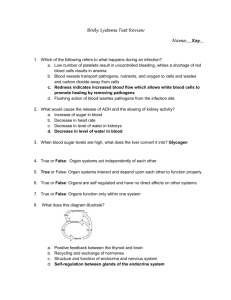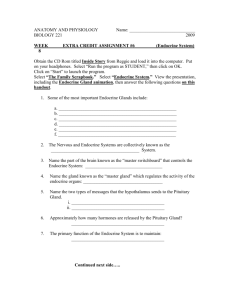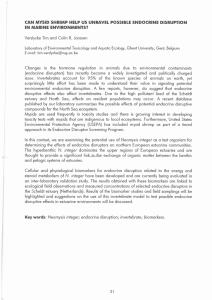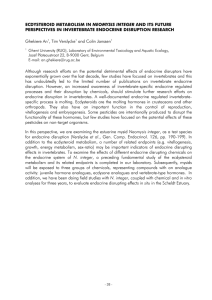Name - SMIC Biology
advertisement
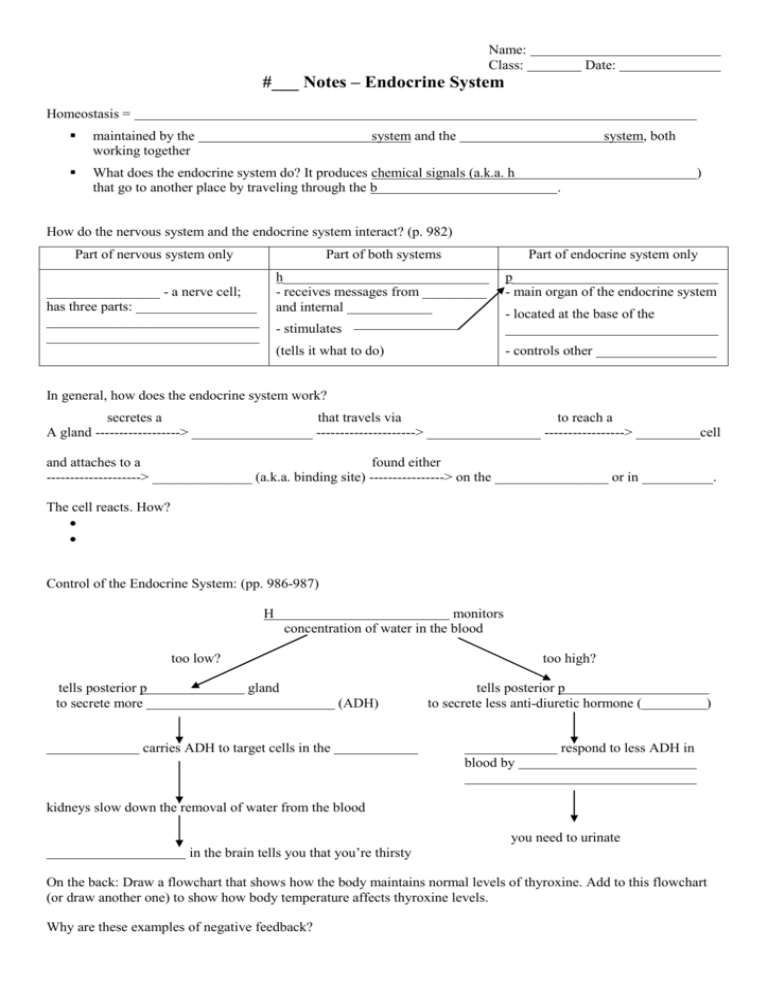
Name: Class: Date: #___ Notes – Endocrine System Homeostasis = maintained by the working together What does the endocrine system do? It produces chemical signals (a.k.a. h that go to another place by traveling through the b system and the system, both ) . How do the nervous system and the endocrine system interact? (p. 982) Part of nervous system only ________________ - a nerve cell; has three parts: _________________ ______________________________ ______________________________ Part of both systems Part of endocrine system only h_____________________________ - receives messages from _________ and internal ____________ p_____________________________ - main organ of the endocrine system - stimulates - located at the base of the ______________________________ (tells it what to do) - controls other _________________ In general, how does the endocrine system work? secretes a that travels via to reach a A gland ------------------> _________________ ---------------------> ________________ -----------------> _________cell and attaches to a found either --------------------> ______________ (a.k.a. binding site) ----------------> on the ________________ or in __________. The cell reacts. How? Control of the Endocrine System: (pp. 986-987) H monitors concentration of water in the blood too low? tells posterior p to secrete more too high? gland (ADH) tells posterior p to secrete less anti-diuretic hormone ( carries ADH to target cells in the ) respond to less ADH in blood by kidneys slow down the removal of water from the blood you need to urinate in the brain tells you that you’re thirsty On the back: Draw a flowchart that shows how the body maintains normal levels of thyroxine. Add to this flowchart (or draw another one) to show how body temperature affects thyroxine levels. Why are these examples of negative feedback?



